

1.1.1) - Chronostratigraphic Lines
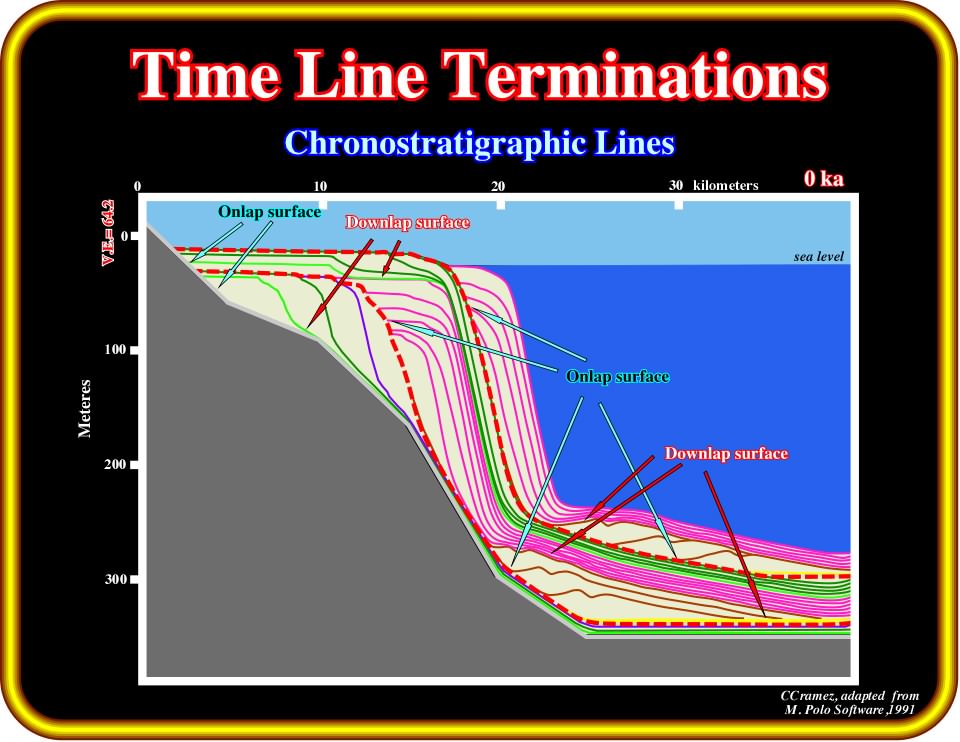
Plate 323- The geometric relationships between the different chronostratigraphic lines of the final step of the model (step 30, i.e., at 0 ka) are depicted above. Onlap and toplap surfaces define the type I unconformities (red), while downlap surfaces are easily recognized above the slope fans (brown) and lowstand prograding wedge (purple), as well as above the lower sequence-cycle boundary, in the proximal parts of the basin. In a type I unconformity, the relative sea level fall is big enough to put the sea level below the shelf break. A type II unconformity is formed when the relative sea level fall is not big enough to expose all shelf, that is to say, the sea level fall but stays above the shelf break.
1.1.) - Chronostratigraphy
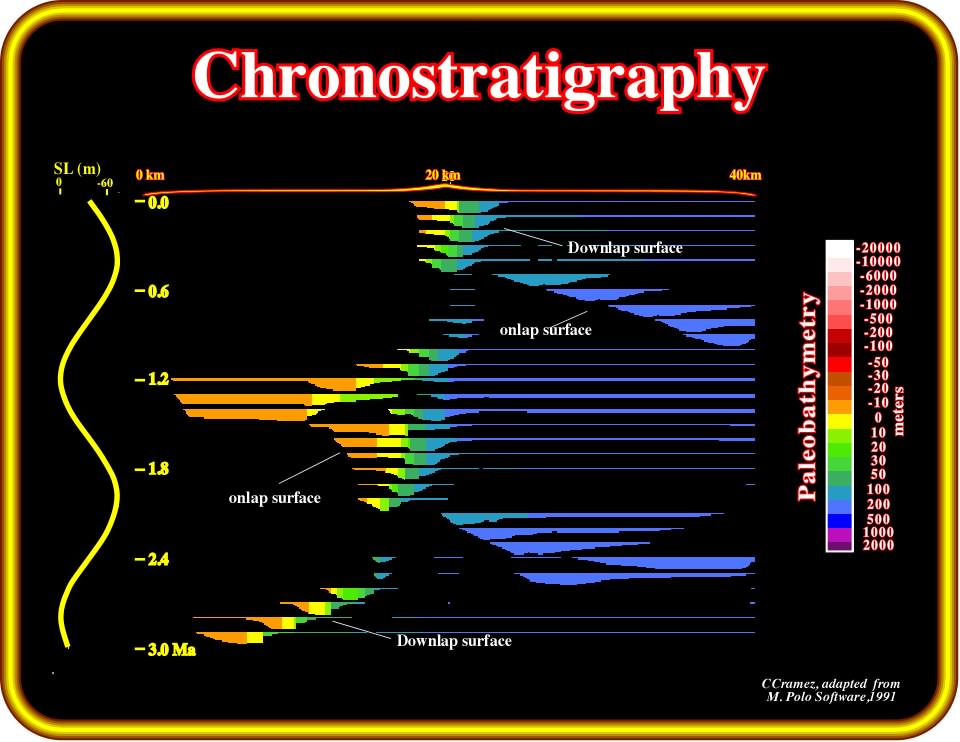
Plate 324- On this chronostratigraphic chart, the reflection terminations, the hiatus (mainly depositional), as well as, the paleobathymetry of the mathematical model are depicted. The major onlap (landward vergence, i.e., the direction in which a geologic structure or family of structures is facing) and downlap surfaces (seaward vergence) are indicated. The paleobathymetry increases seaward, subsequently, deep water onlap surfaces suggest basin or slope fans (BFF or SF).
1.1.3) - Systems Tracts
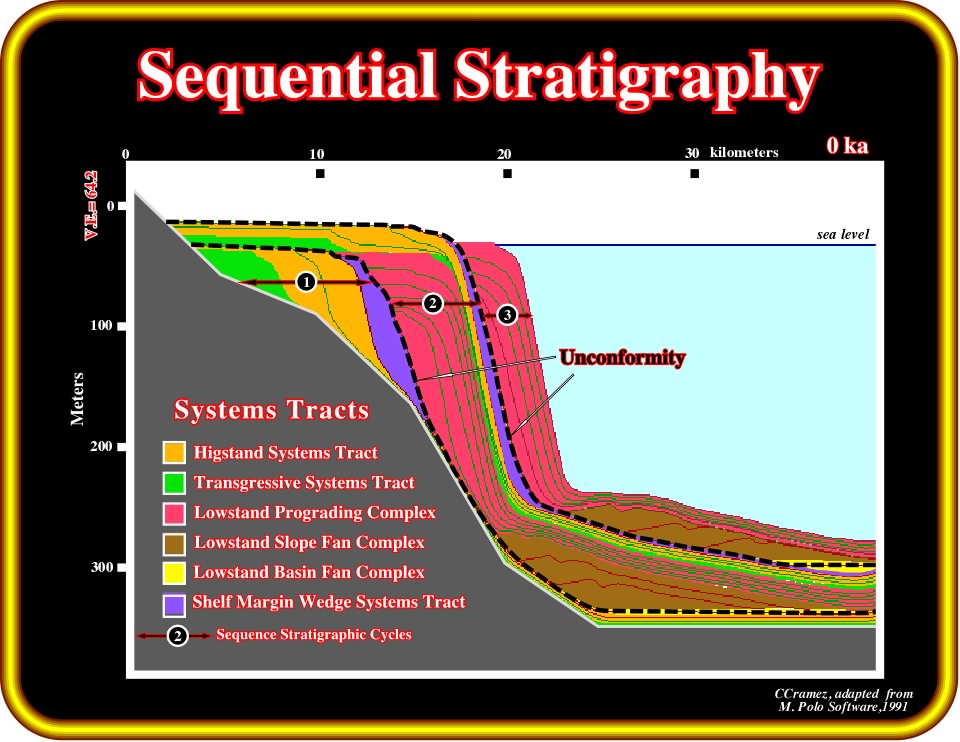
Plate 325- The sequential stratigraphy of the mathematical model (3.0 - 0.0 Ma) put in evidence three sequence stratigraphic cycles. The oldest (steps 1-4) is incomplete. From bottom to top, we recognize just a TST, a HST and a SMW (shelf margin wedge). The second sequence cycle (steps 5-20) is complete. It is composed of LST composed by three member (BFF+SF+LPW), TST and a HST. The third (21-30), which is not yet finished, is just represented by a LST (lowstand systems tract).
1.1.4) - Depositional Systems
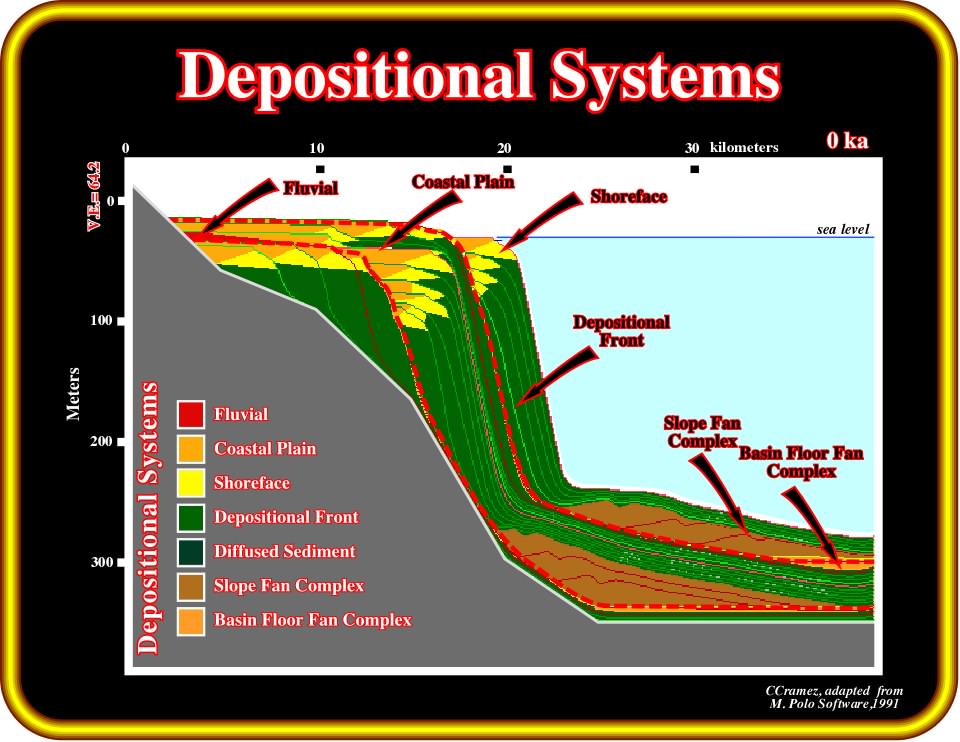
Plate 326- As each systems tract corresponds to a lateral linkage of coeval depositional systems, i.e., coeval facies, environmental and lithological predictions can be advanced. As illustrated, in this sand-shale mathematical model, the following depositional environments can be predicted: (i) fluvial (relating or occurring in a river, generally landward of the bayline) ; (ii) coastal plain (extending along a coast); (iii) shoreface (along the narrow, steeply sloping zone between the seaward limit of the shore at low water and the nearly horizontal offshore zone) ; (iv) depositional front (slope, seaward OD the horizontal offshore zone) and (v) deep water (turbiditic deposits).
1.1.5) - Facies
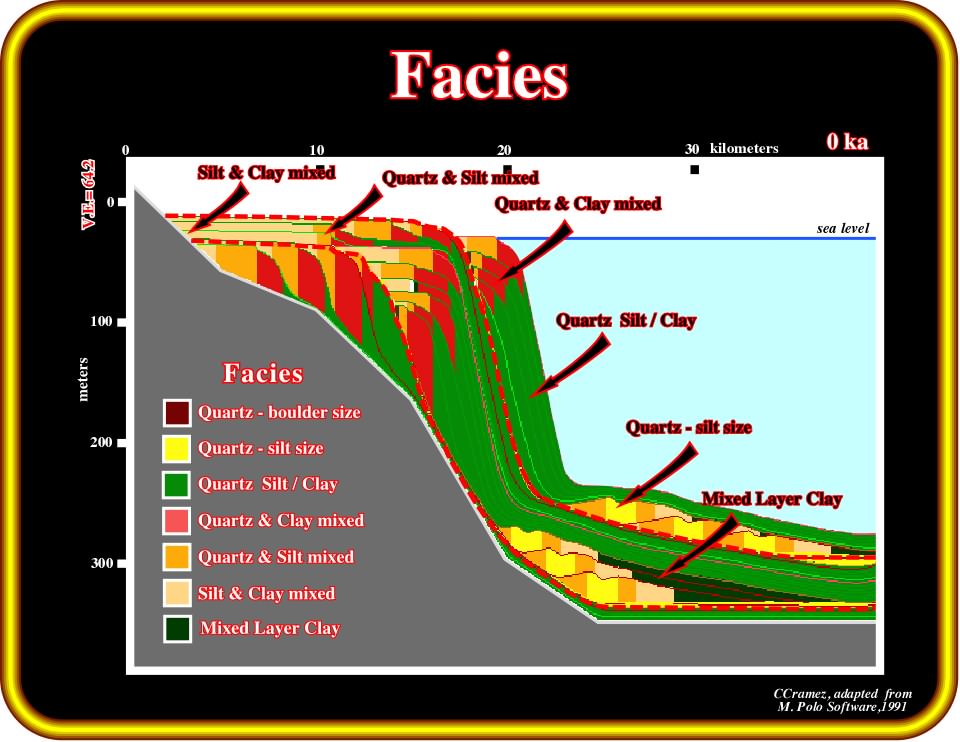
Plate 327- Systems tracts are composed of lateral assemblages of depositional systems, which are characterized by typical lithologies and depositional environments. On seismic data and particularly in absence of amplitude and sedimentary anomalies, the recognition of sequence cycles and associated systems tracts, is the best way to hypothesize the most likely location of potential reservoir-rocks. In fact the more likely potential marine source-rocks are associated to downlap surface separating transgressive systems tracts from the overlying highstand systems tracts. On the other hand, as depicted above the more likely sandy reservoir-rocks onlap against the basal unconformity bounding a sequence cycle.
1.1.6) - Paleobathymetry
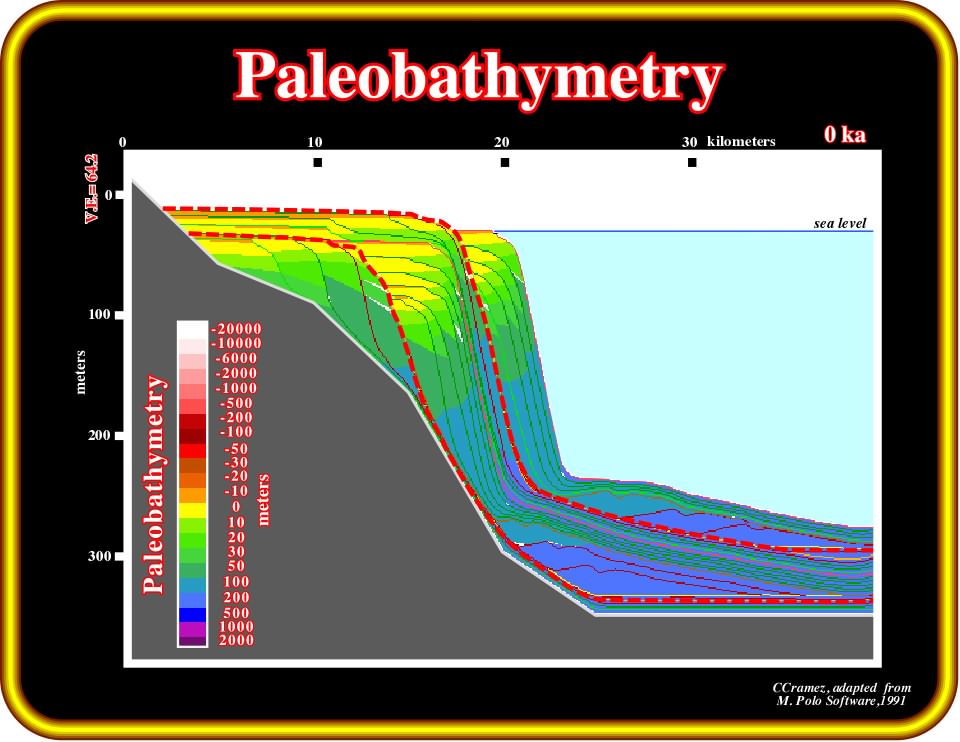
Plate 328- The paleobathymetry, i.e., the depositional water depth can be easily calculated. In fact, assuming that landward of the depositional coastal break, the paleowater depth is more or less zero, the coastal plain can be taken as a datum plane. Therefore, at a given point, the depositional water depth corresponds to the depth of the point in relation to the coastal datum plane depositional water depth in the platform ranges from zero to, more or less, 200 meters.
1.2.1) - Erosion taken into account
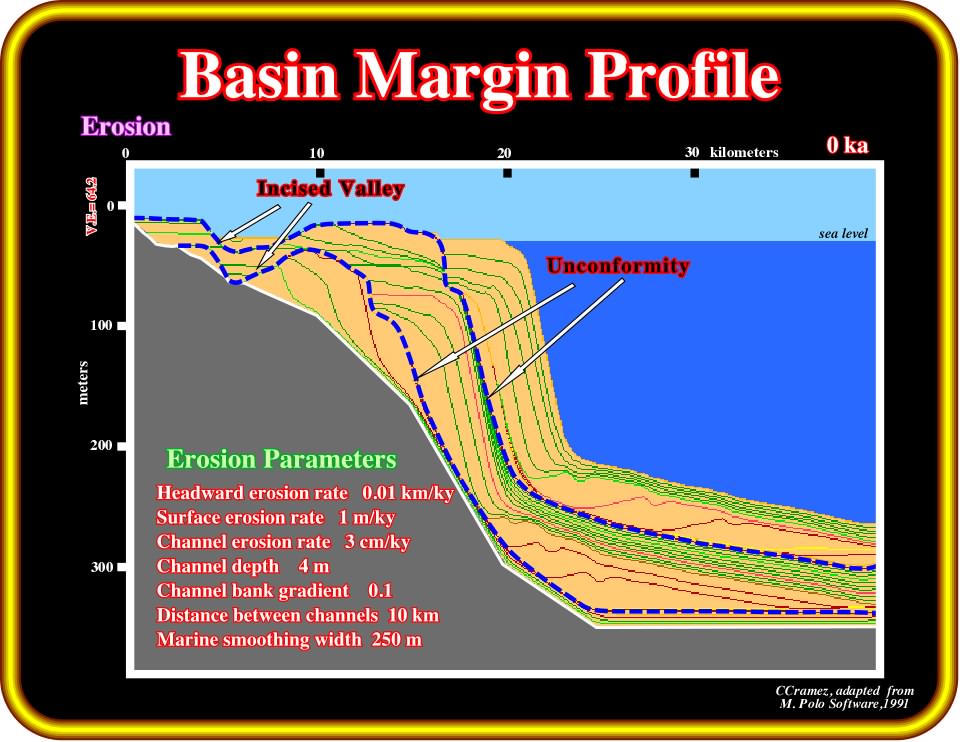
Plate 329 - In the previous mathematical model (Plate 328), erosion was ignored. Contrariwise, in this model erosion was taken into account. Obviously, the picking of unconformities, particularly landward of the shelf break, is easier due to the presence of incised valleys (IV), which are mainly filled with sediments of the upper part of the lowstand prograding wedge. Seaward of the shelf break, erosion is meaningless, particularly in absence of submarine canyons. Just in the lower part of the continental slope, the onlapping of turbiditic deposits allow geoscientist to identify the lower sequence cycle boundary.
1.2.2) - Flexure Loading
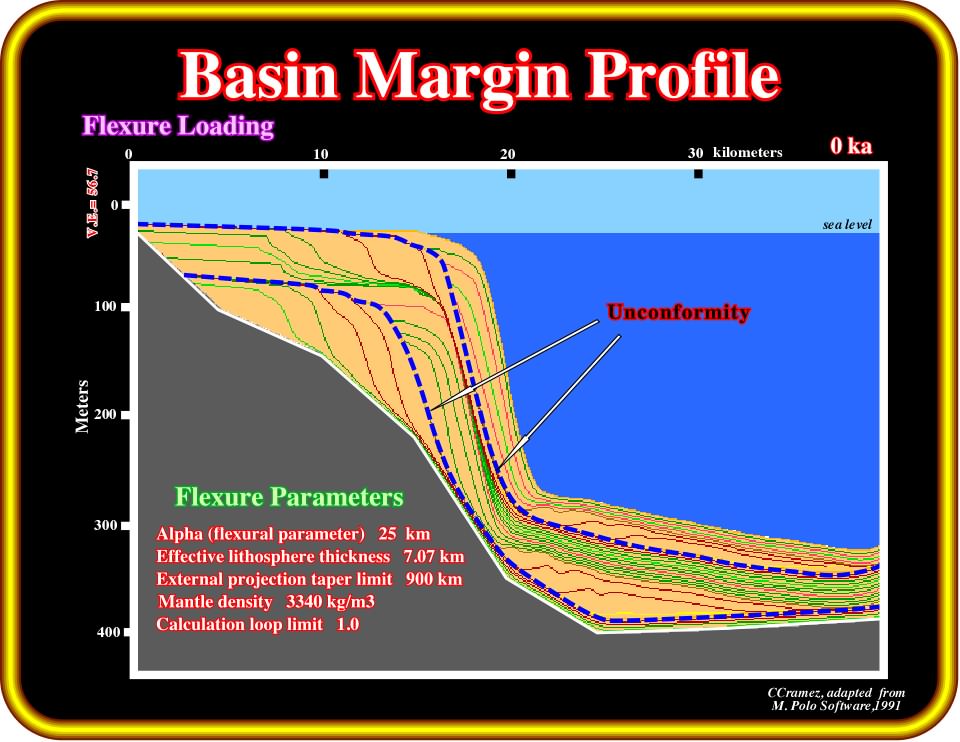
Plate 330 - In relation to the initial model, in which erosion was not taken into account, we have to introduce a flexure loading (see flexure parameters), i.e., the flexure of the substratum induced by the weight of the sediments, which changes the total subsidence. Relative to the initial model, lowstand systems tracts (LST) are less developed. Contrariwise, transgressive systems tracts (TST) and highstand systems tracts (HST), as illustrated in the next plates, are more developed.
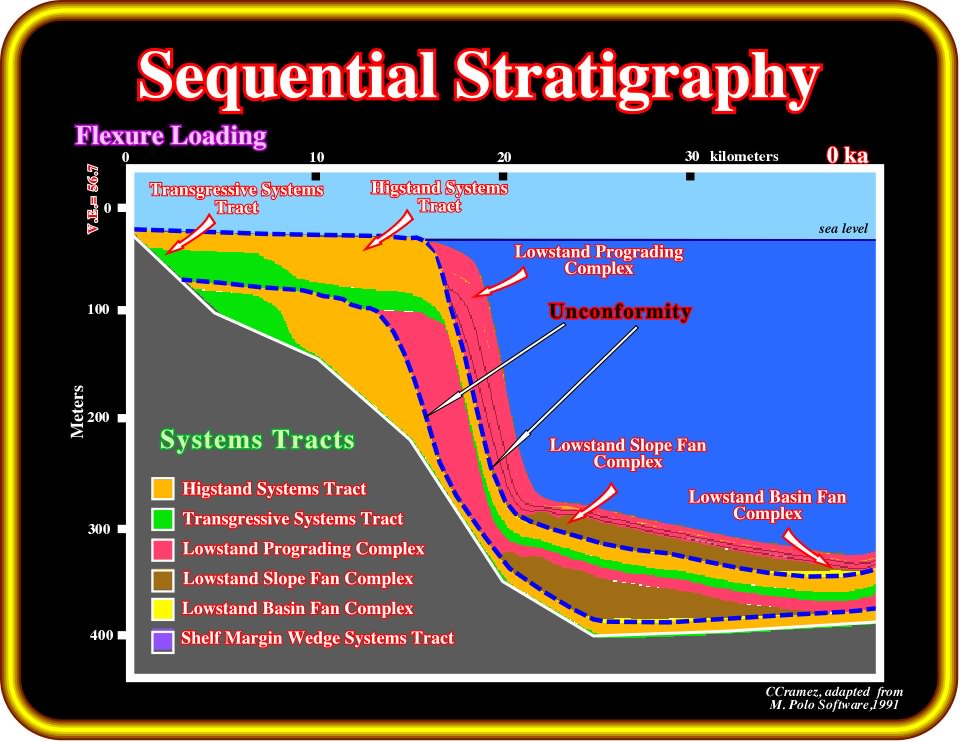
Plate 331- In relation to the initial model, the introduction of flexure loading slightly reduces the development of the lowstand systems tracts (LST). On the contrary,as illustrated here, the transgressive systems tracts (TST) and highstand systems tracts (HST) are much more thick. Additionally, the backstepping geometry of the transgressive systems tract, particularly in the second sequence cycle, is sharper.

Plate 332 - The introduction of flexure loading in the initial model changes the paleobathymetry significantly. In relation to the paleobathymetry depicted in Plate 328 (no flexure loading), shallow water (coastal plain) deposits seem thicker. Also, shallow marine intervals look more developed. In the deep environments, there are no major changes.
1.2.3) - Bathymetry
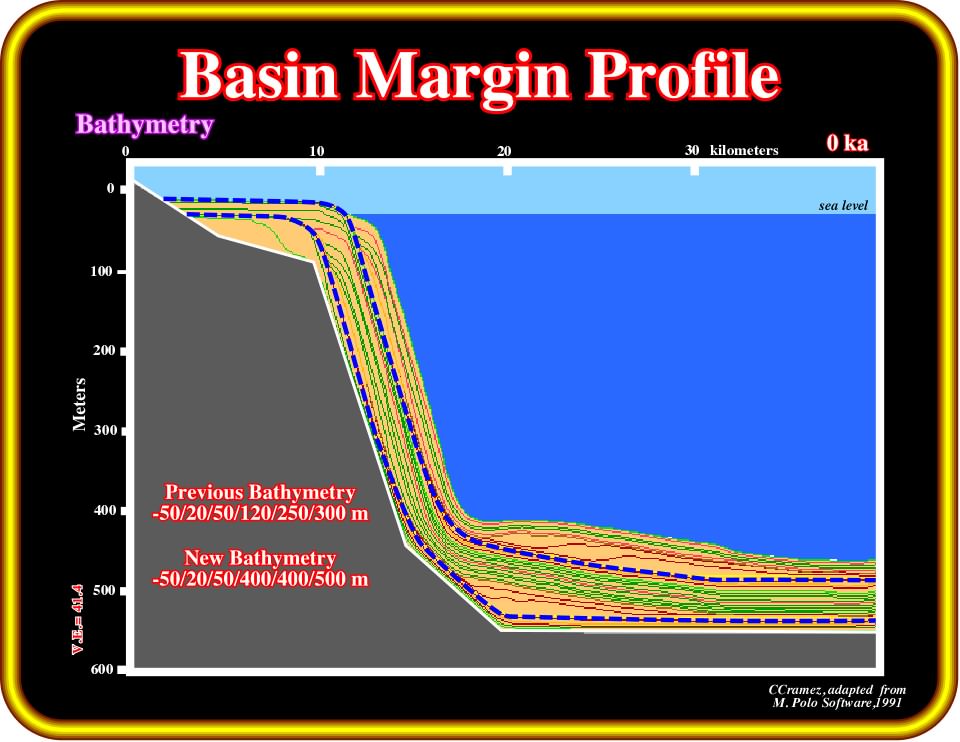
Plate 333 - As illustrated above, in this model, in relation to the initial model, we have changed the original bathymetry. The consequences of such a change are quite evident. In spite of the fact that we were obliged to change the vertical scale, it is important to notice that the outbuilding (lateral depositional, around kilometer 13, is much smaller than in the original model (outbuilding around around kilometers 20 km, see Plate 328).
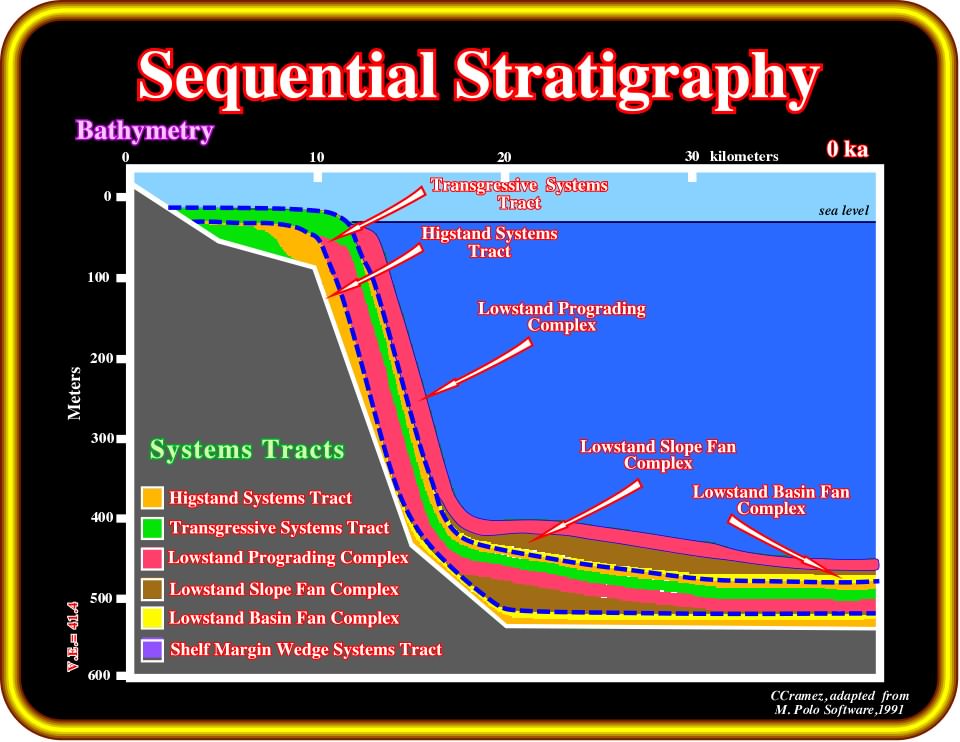
Plate 334 - In relation to the sequential stratigraphy of the initial model, changing the original bathymetry significantly modifies the position of the sequence boundaries as well as the development of the different systems tracts. It is interesting to notice that the highstand systems tracts (HST) are quite reduced and sometimes almost absent or under seismic resolution.
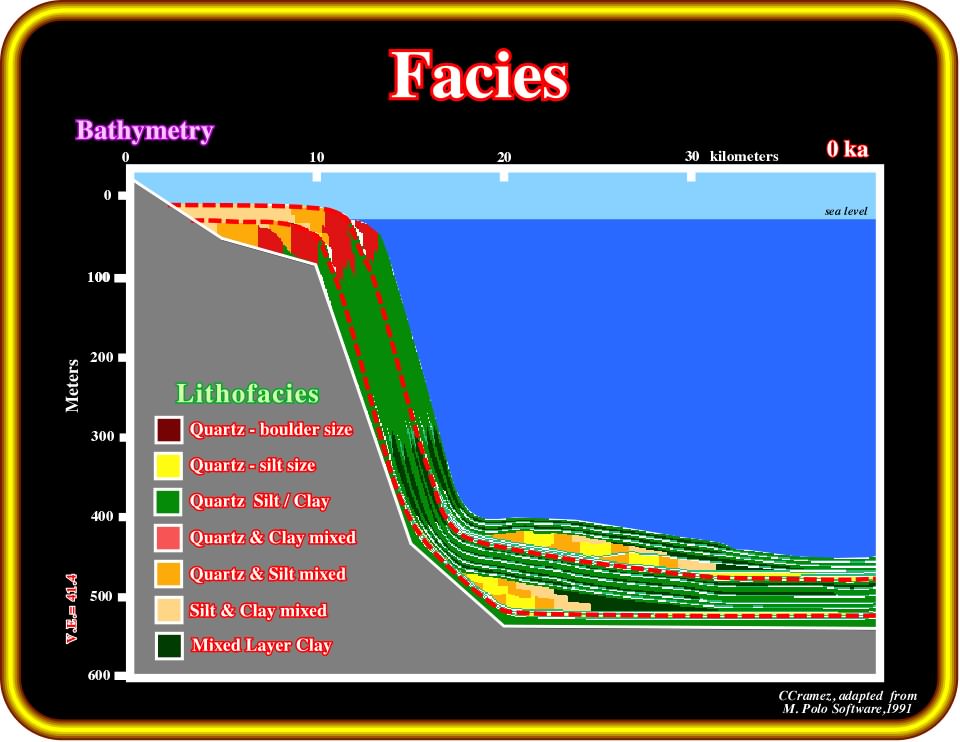
Plate 335 - The facies distribution follows the changes of the sequential stratigraphy depicted on Plate 334. The shallow water sediments are more restricted than in the original model. Contrariwise, the sandprone deep water sediments, and particular the basin floor fans, are more developed which balance the shallow water deficit. Note that in both models, the terrigeneous influx is the same.
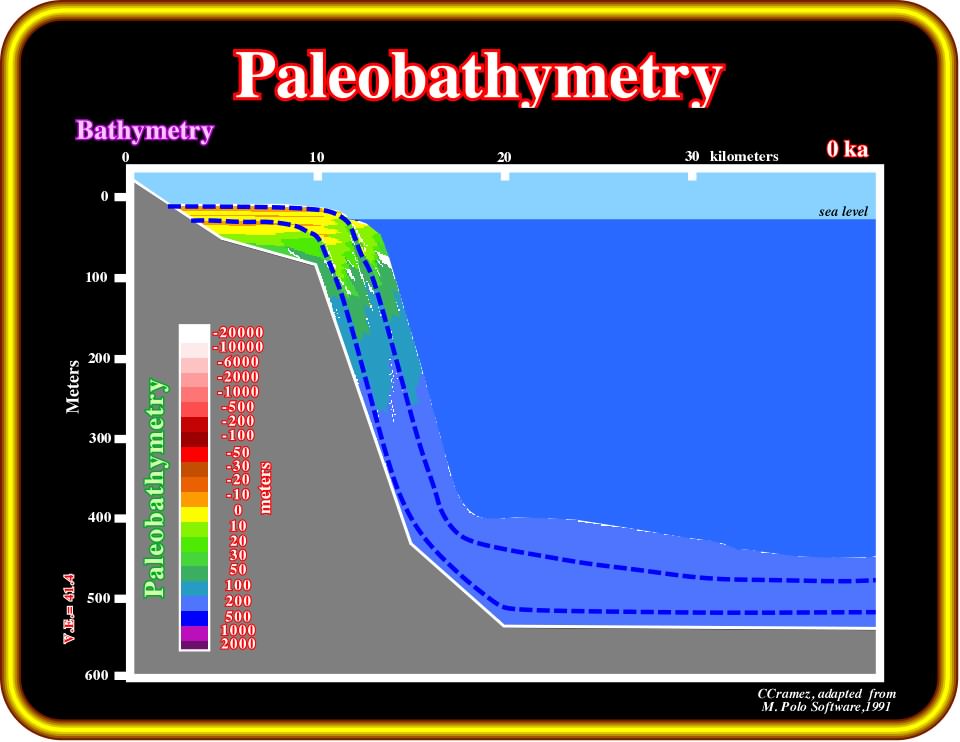
Plate 336 - The changing in the original bathymetry changed the depositional water depth. Taking into account the vertical scale, it is evident that shallow water sediments are much less developed than in the original model.
1.2.4) - Sediment supply
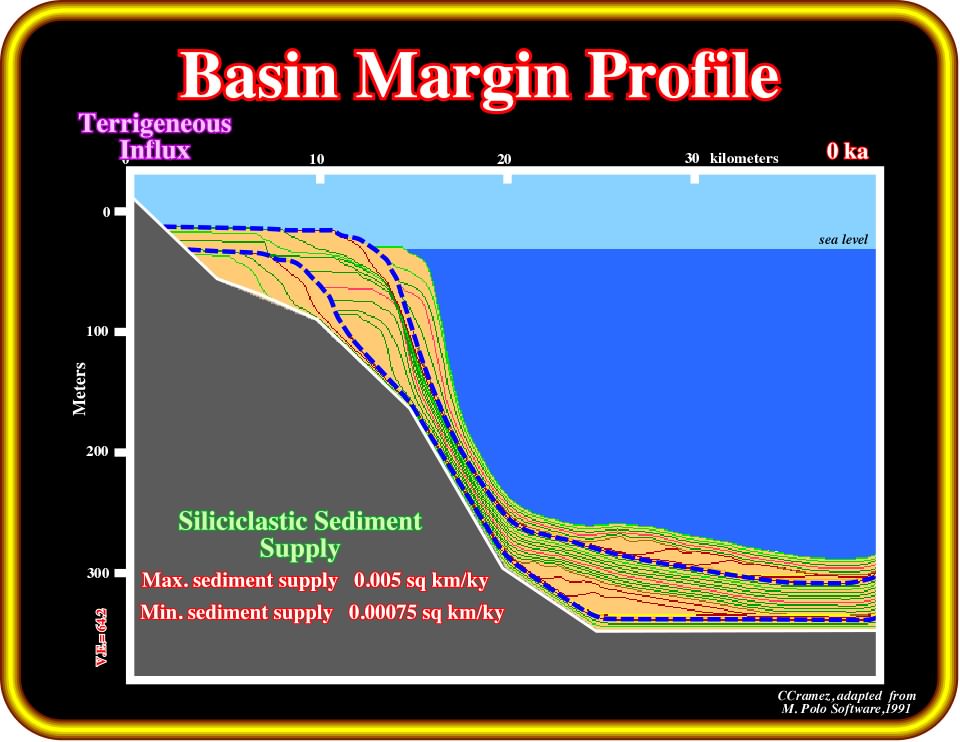
Plate 337 - On this model, the siliciclastic sediment supply was reduced to 50% in relation to the initial model. Comparing both models (see Plate 331), the changes are quite evident. Fundamentally, the outbuilding of the shallow water sediments is here more reduced, as well as the upbuilding of the deep-water sediments. The geometry of unconformities and systems tracts is roughly the same.
1.2.5) - Subsidence

Plate 338 - On this model, we have changed the subsidence. As indicated, we have introduced a seaward decreasing subsidence (5 / 4 / 2 / 1 / 0.3 / 0.2). The consequences of such changes are more than obvious. The geometry of the sequence boundaries is quite different as the sequential stratigraphy, strongly dipping landward and seaward (see next plates). Several type II unconformities can be recognized.
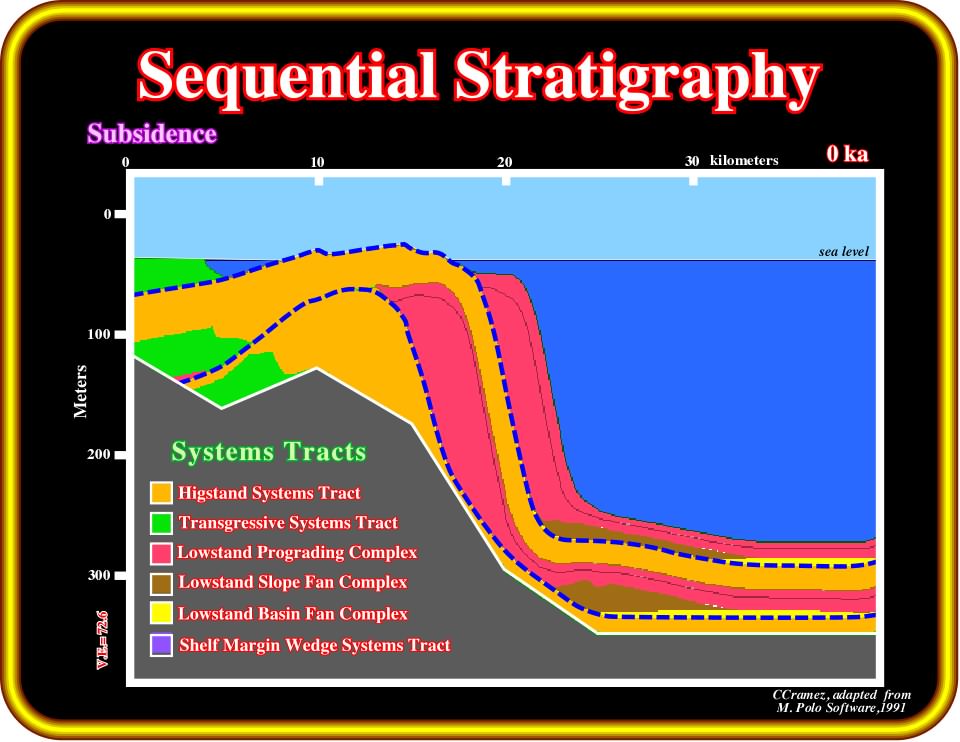
Plate 339- From the previous plate, where the geometry of the chronostratigraphic lines is depicted, the above sequential stratigraphy can be deducted. The development of the transgressive (TST) and highstand systems tracts (HST), particularly in the proximal parts of the basin, where the subsidence is higher.
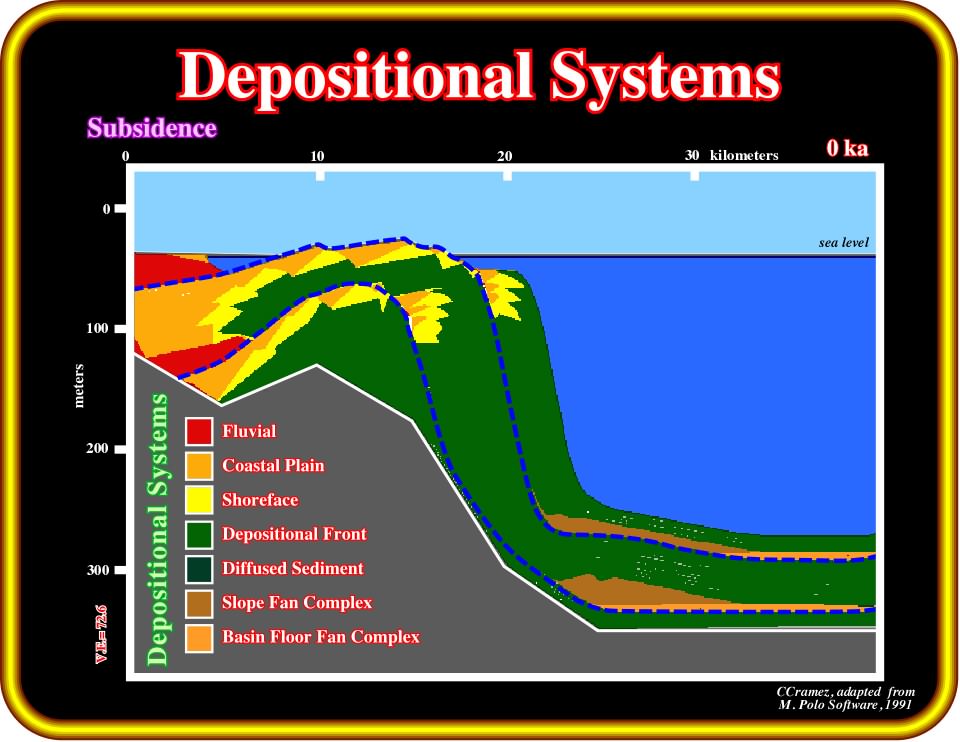
Plate 340- The depositional environments illustrated on this plate can be easily deducted from the sequential stratigraphy shown in Plate 339, taking into account that the paleowater depth, which can be calculated relative to the coastal plain, where the paleowater depth is assumed to be zero (see Plate 341). As previously, the more likely marine source rocks are associated with downlap surfaces and the more likely sandy reservoir-rocks onlap against the lower unconformity of each sequence cycle.